Farmer’s Guide to Trucking Regulations available to Ohio Farm Bureau members
The guide includes a farm driver checklist, overview of state and federal regulations and exemptions, CDL qualifications and more.
Read More
Below is the full Q & A of Ohio Farm Bureau’s Director of Water Quality and Research Jordan Hoewischer’s discussion with Glen Arnold, associate professor and field specialist with OSU Extension, specializing in research related to manure application technology. You can listen to the interview in its entirety here.
A: I was a regular county extension agent for several years when a number of large livestock farms moved into northwest Ohio. There were a lot of questions, a lot of concerns about how the manure was applied and how it was utilized – does it get into ditches, does it get into wells. We began to do research plots using dairy and swine manure, using a manure tanker, in the mid-2000s.
A: We are in kind of a unique position here in Ohio. We do a lot more manure application research here that I’ve seen in other any other areas of the Midwest. It began with top dressing of swine manure in wheat for a number of years and some dairy manure. Worked pretty well and we thought the next logical step would be to pull a drag hose on wheat and we did that with great success. There are farmers up and down western Ohio who will pull a drag hose out in the spring and dress their wheat with manure. Then we wondered if we could use manure on corn, which needs more nitrogen than any other crop we grow up here. We (modified) a manure tanker and began to sidedress corn up and down northwest Ohio. We have more than 50 on-farm plots and we’ve also done a lot of research with the OARDC small-farm plots and have been real happy with the results.
A: On small plots, over six or seven years we are running about 16-18 bushel more corn per acre using dairy or swine manure as a fertilizer source than using commercial 28-percent. This is all knifed in. If it’s surface applied, the 28 percent is better than manure as a fertilizer. On big plots we don’t see a lot of difference between manure and commercial fertilizer, but manure holds its own. I think the reason the yields are so similar in the field conditions versus our university research is basically the compaction from the large manure tanker.
A: Right now, with the current commercial fertilizer prices, it would be common for a farmer to spend about $75/acre to sidedress corn. If you look at getting similar yield with manure, a product you already have, the cost of applying manure is about what you would have spent on commercial fertilizer. We’ve worked with Harrod Farms in Darke County. We have four growing seasons under our belt and using the drag hose to sidedress corn there we are about 15 bushels per acre ahead over using commercial fertilizer. The manure comes directly from the hog facility. The manure never sees the light of day, we put it directly underground. We see similar results as we do in a research facilities and I thinking the drag hose reduces the soil compaction compared to the manure tanker. I feel really comfortable saying we can do very well with drag hose sidedressing on corn up to a certain stage. This could be done from the day the corn is planted up to the V4 stage of corn growth. If you look at Harrods and you look at the economics. When you figure in the additional corn yield above the fertilizer savings, we calculated they are running about $126/acre to the positive by using their own manure as a sidedress for corn.
A: If you look at the Bobby Moser pyramid – it had to be economically viable, which it is. It had to be environmentally viable, which it is. We’re incorporating the manure as it’s applied to a growing crop. And lastly it is socially viable. You’re placing manure underground. Your neighbors like that and it’s an opportunity to do a good job with our manure management.
A: Most drag hose people tell me they’re not very busy once corn planting season begins. If you have a working relationship with a current drag hose owner, I think that would be an opportunity that he or she would be interested in looking at. If you don’t have a relationship this is an opportunity to establish one. Hopefully Ohio State will have three sidedress toolbars available in the 2018 growing season. They will be located in Auglaize, Paulding and Crawford counties. It’s an opportunity for farmers to look at the equipment and try to equipment and if they like it they could potentially get together with others with similar livestock interests and purchase a toolbar. Stages V1, V2 and V3 seem to be very acceptable stages for a drag hose (over corn).
A: In a wet year, the manure seems to stay in the field longer than the commercial nitrogen. We saw that in one of Harrod’s plots that had a higher yield as compared to commercial fertilizer. Then in a dry year, because you are putting about 6,000/acre underground, that’s almost like getting a half-inch of rain on top of the ground. You just don’t lose a lot to evaporation and the crop really responds well to it.
A: Most commercial applicators are not set up to do this. They’ve never had a reason to have the row-ready equipment. That would be the biggest one. They’ve got to have a tractor that have enough front end weight to turn on the end of the field with the hose. Once this window of application has been developed, I think they’ll run with it.
A: One of the questions I ask farmers is “Do you think you have made a significant change in your manure application practices that you think will result in less nutrients leaving your fields?” and better than two-thirds of the farmers say they have in the last five years. There are a lot of farmers making changes and trying to be part of the solution in northwest Ohio. For a noticeable change, I think it’s going to take a while.
A: The phosphorus (currently) produced by the livestock in northwest Ohio is about 23-to-24 percent of the phosphorus needed each year by the crops growing in northwest. There is certainly room for more facilities to go in. The key is to spread them out as we’ve always done. I think we have plenty of room for additional livestock facilities. What I am more concerned about is that these livestock facilities put wheat in their rotation so there is a place for the manure to go. We cannot put all our eggs in one basket. We need to look at other (fertilization) windows.
A: We need to understand we can go through stretches of time that we cannot get out in the field. If it requires wheat in a crop rotation or have a hay field handy for a place for it to go. You need to have phone numbers of folks who can haul manure. Need to have places to go with it. You need to be ready if you have any discharge or spill. Need to be on good terms with soil & water (conservation districts) and other entities in the counties. We just need to be thinking ahead. Have an action plan. Farmers need to be prepared for those situations.
A: In 2017, we had a very long stretch from May to August where manure couldn’t really be applied very routinely, it was wet. That first week of August everybody was able to get started hauling manure. When you get a 2, 3, 4-inch rains, that adds a lot of volume in a hurry to outdoor storage and it keeps you out of fields for longer periods of time. It’s not too long before we have frozen ground and farmers who planned ahead with cover crops will be better prepared if there is a need for frozen ground application.
A: Keeping our solids and liquids separate would be a nice start. We’re working on a belt system to keep them separated, but that technology isn’t economically viable yet. We’re also working on new application windows so we don’t save so much manure for fall application. More alternative crops in the summer that would benefit from the manure. There is a lot of potential for the future. For the time being, though, we’re locked into our liquid systems.
A: Cell 419-235-4724
Email: [email protected]
Ohio State Extension Environmental and Manure Management on Facebook


The guide includes a farm driver checklist, overview of state and federal regulations and exemptions, CDL qualifications and more.
Read More
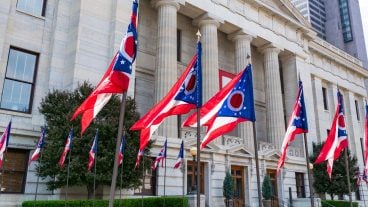
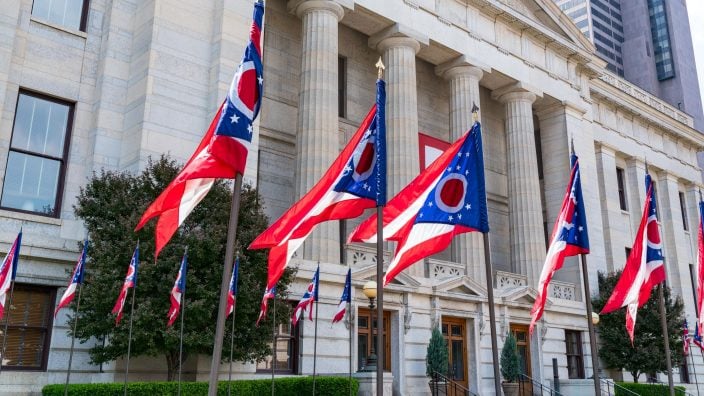
Ohio Farm Bureau provides opportunities, platforms and resources to help you develop your voice in the industry and give farmers a seat at the table with leaders and legislators.
Read More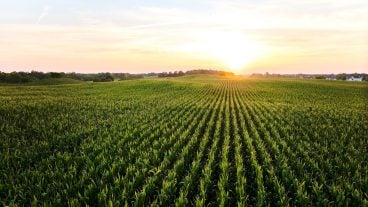
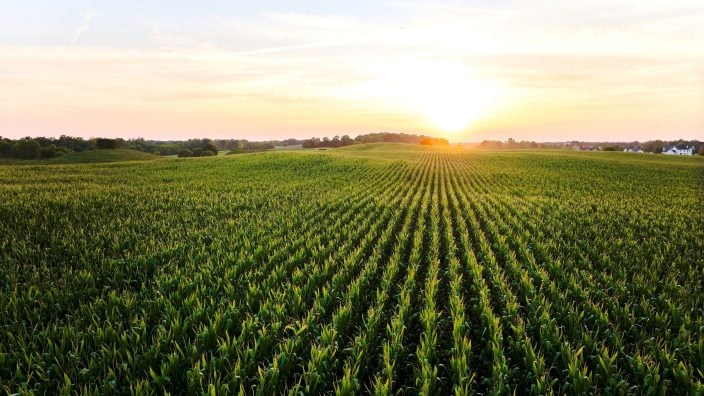
The emergency fuel waiver to allow the sale of summer gasoline blends containing 15% ethanol will lengthen the period during which Americans can continue buying E15 from June 1 to Sept. 15.
Read More

The Small-Scale Food Business Guide covers federal and state regulations for selling food products such as raw meat, dairy, eggs, baked goods, cottage foods, fruits and vegetables, honey and more.
Read More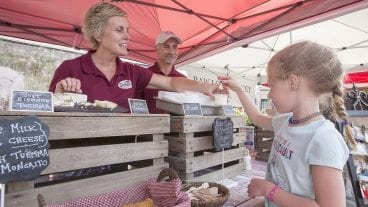
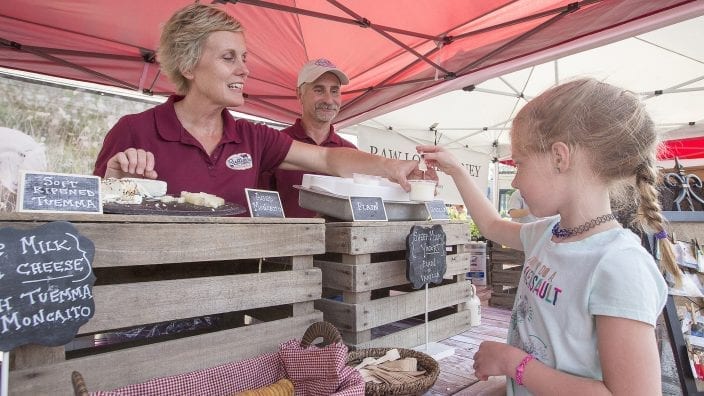
New resources and technology are broadening the different types of sales tools and strategies available to farmers.
Read More

ODA will enroll 500,000 acres into the program for a two-week sign-up period, beginning April 22, 2024, through May 6, 2024. Contact local SWCD offices to apply.
Read More

Katie Share of Columbus has been named ExploreAg and Youth Development Specialist for Ohio Farm Bureau.
Read More

Mary Klopfenstein of Delphos has been named Young Ag Professional and Ag Literacy Program Specialist for Ohio Farm Bureau.
Read More

The plan has been updated to give sole proprietors access to more rate stability and a smart solution that offers potential savings on health care.
Read More

The American Farm Bureau Federation, in partnership with Farm Credit, is seeking entrepreneurs to apply online by June 15 for the 2025 Farm Bureau Ag Innovation Challenge.
Read More